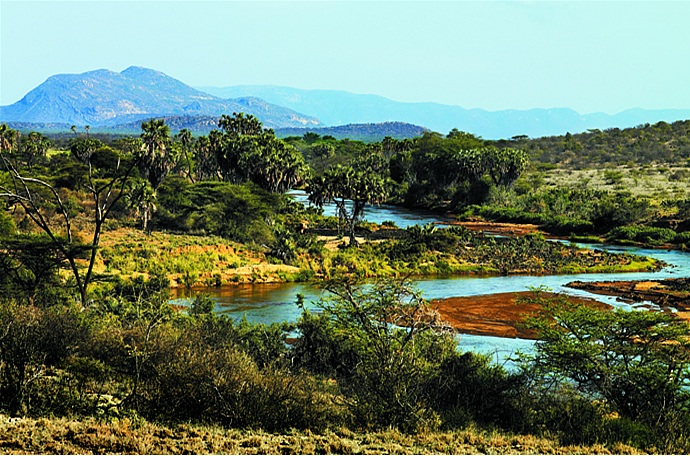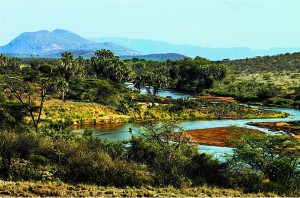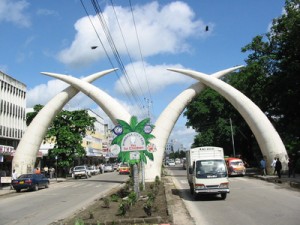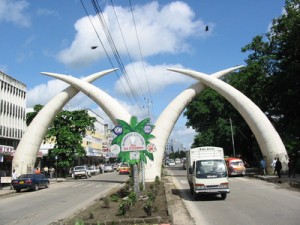 Whether it’s your anniversary, your honeymoon, Valentine’s Day, or just a special night out on your holiday, not many things can top a magical dhow dinner cruise in Mombasa. It’s perfect as a part of a romantic weekend getaway, or simply a way to squeeze what feels like a luxury vacation into one memorable night.
Whether it’s your anniversary, your honeymoon, Valentine’s Day, or just a special night out on your holiday, not many things can top a magical dhow dinner cruise in Mombasa. It’s perfect as a part of a romantic weekend getaway, or simply a way to squeeze what feels like a luxury vacation into one memorable night.
A dhow dinner cruise provides a sense of escape for couples in love, with fine dining, live performances, and lovely vistas of sunsets over water.
The Tamarind Dhow dinner cruise lasts 4 ½ hours of relaxation, beauty, and amazing food. At the start you will be welcomed aboard with a Dawa, a tasty vodka, lime, and honey drink and the band will strike up as your cruise begins. A dhow cruise is a perfect venue to experience the hospitality of Mombasa. The best part of the cruise is its four-course dinner of lobster or steak. When the whether is warm, a romantic dinner date can include strolling on the upper deck, enjoying the great views of the skyline. Be it for a Valentine’s Day or any other romantic occasion, a dhow dinner cruise is a special way to celebrate your relationship.
You can also opt for a shorter, two hour day cruise. This can easily be as romantic as the dinner cruise without consuming an entire evening. The lunch cruise takes you to a remote cove where you will dine on Tamarind seafood and traditional Kenyan dishes and finish with fruit salad, halwa, and Kenyan coffee.
Taking the day cruise also offers you the chance to see Mombasa in a different way than those who stay on land. People usually hire cars through a trusted Mombasa tour operator or use Tuk-Tuks to see the city because it can be tough to explore the whole city on foot. But why get stuck in traffic when you can catch a different view at a steady pace by taking a dhow cruise?
At Find Mombasa Hotels we will help you plan your holiday to include all the activities you are interested. Dhow cruises are very beautiful experiences soaking in the views of the island and the coast. Most dhow/boats have an upper and lower level. The lower level is enclosed so you don’t get the feeling of being out on the water. You can walk up to the open deck to enjoy the breeze as the boat glides through the water.
The city looks amazing during the day as well as at night when it’s all lit up. The boat ride is unforgettable and the food is outstanding. The dhows are available to hire as well for parties, weddings, and a number of other wonderful occasions.
 Until 1999, Haller Park was known as Bamburi Nature Trail. It lies along the Mombasa Malindi road next to the Bamburi Cement Factory. It is a restored quarry home to a variety of plant and animal species. It is open to the public and attracts both local and international visitors.
Until 1999, Haller Park was known as Bamburi Nature Trail. It lies along the Mombasa Malindi road next to the Bamburi Cement Factory. It is a restored quarry home to a variety of plant and animal species. It is open to the public and attracts both local and international visitors.
It draws people in so readily because a visit to the park offers the unique opportunity of gaining close up contact with a variety of animal species through educational guided tours tailored to their needs. The professional tour guides conduct these tours in English, French, German, Italian, or Swahili.
At the Coastal Sanctuary, one can find a Crocodile Farm, Reptile Park with a rich variety of snake species, a beautiful serene Palm Garden and Game Sanctuary. Watch Sally, Potty, and Cleo, all hippos, feed at the Game Sanctuary at 4:00pm each day.
Everything about Kenya is diverse – from the people and the animals to the climate. Visiting Haller Park during your stay in Mombasa is one of the best ways to experience the diversity among the plant and wildlife. Currently, Haller Park plays host to a variety of wildlife including hippos, giraffes, buffalos, and antelopes as well as smaller mammals and birds.
The diversity of vegetation is considerable, from mangrove palms and majestic indigenous shade trees to coastal forests where several of these plants are rare and endangered; this region is a haven for botanists. Yet each plant plays an important role in the overall harmony of the ecosystem.
Haller Park has the distinct honor of being the first recipient of the United Nations Environmental Program Global 500 Roll of Honour award for the unique, ecologically sound and successful rehabilitation undertaken. The park is a product of the cement company’s efforts, since 1971, to convert barren landscape of disused limestone quarries into vibrant and diverse ecosystem of forest, grasslands and ponds. The park now provides a home to various animal species from Vervet monkeys to giraffe; weaver birds, kingfisher, storks, herons, egrets, owls, eagles, kites, cranes, ibis, sandpipers, and the list is endless.
When the project started, a major push was made to make the entire quarry for environmentally sound. The effort worked and the area is now full of lush beauty. The onetime quarry is now a thriving game sanctuary, fully stocked with game including giraffe, eland, hippo, oryx and more.
Haller Park is a must visit when in Mombasa. Whether you go for the plant life or to see the huge variety of animals, you will be blown away. Call us today to arrange your Mombasa trip. We’ll get you set up with your flight, your hotel, and a complete itinerary so when you’re on your holiday you have nothing to worry about.
We talk a lot about the beaches and resorts around Mombasa but now let’s take a look at some of the great attractions the city itself has to offer. Mombasa is full of culture and manmade sites worthy of more than a casual reference.
Old Town is perhaps the best known. It is a section of town located in the eastern part of Mombasa Island. If you take any road off of Digo east for a few blocks you’ll be in Old Town. It is an intricate maze of small roads cut through beautiful mosques and tall buildings (many of the white). Some of these structures date back to the early 19th century. It’s easy to get lost in this maze while exploring, so make sure you always which direction is west. Old Town isn’t that big, but it makes for a wonderful day trip.
Apart from the buildings – much of it is Swahili architecture – you will see people dressed in beautiful traditional garb. Take it slow and stop by a bakery, market, have lunch a restaurant and check out the curio shops. After 6 pm venders set up barbecue grills on the street corners and sell snacks for cheap. The street food beats most food you get in restaurants and it’s a fraction of the price.
Fort Jesus is one of the main attractions in Old Town. It was a Portuguese build in 1593. It changed hands multiple times over the next few centuries. Today it has been turned into a museum that is open from 8:30 am to 6 pm.
The impressive and symbolic Mombasa Tusks are the grand entrance to the heart of town. The tusks were built in commemoration of Queen Elizabeth’s visit in 1952. They are placed on the path from the port to the town. Ivory was considered to be a rare and precious commodity during the time, and the tusks were meant to embrace the Queen and the British Empire and welcome them into the town and its culture. Coincidentally the tusks also spell the letter “M” for Mombasa.
If you head north out of the city toward Nyali you will come across Mamba Village. This is East Africa’s largest crocodile farm. You can take an educational tour to learn about the behavior and life of these amazing reptiles. Be warned the tours end with a sometimes graphic feeding. Also of interest to nature lovers is the Bamburi Nature Trail, home to an enormous assortment of exotic flora and wildlife. On the northern coast of Mombasa, towards the town of Malindi, the Gedi Ruins are the remains of a collection of Swahili rock structures dating from the 15th century. Gedi was a small town built entirely from rocks and stones, which was inhabited by a few thousand Swahili people and ruled by a very rich Sultan. The ruins are designated as a National Museum by law, and their preservation are a direct reflection of the commitment of the Government to uphold the country’s cultural and historical background.
You can spend an entire day simply looking at the ancient mosques and temples. The dozen mosques in Old Town are the most traditional, while more modern examples in town include the Skeikh Nurein Islamic Center and the Khonzi Mosque. The Hindu Lord Shiva Temple and the Swaminarayan Temple are a few of the many symbols of Mombasa’s cultural diversity. Extravagant idols and stone carvings of the various religious ideas and gods are displayed within the temples. There is also a Sikh Temple, a Jain Temple, and a Hare Krishna Temple. The two main Christian churches are the Holy Ghost Cathedral and the Mombasa Memorial Cathedral.
 Mombasa is a perfect holiday destination. You’ll find sun, gorgeous beaches, and bustling city life all surrounded by the wilds of Africa. Mombasa is one of the few places in Africa that offers a whole set of holiday options in one package. Mombasa’s proximity to Tsavo National park makes safari adventure readily available. Tsavo East and West are home to all of the ‘Big Five of Africa’ – Lion, Leopard, Buffalo, Elephant and Rhino.
Mombasa is a perfect holiday destination. You’ll find sun, gorgeous beaches, and bustling city life all surrounded by the wilds of Africa. Mombasa is one of the few places in Africa that offers a whole set of holiday options in one package. Mombasa’s proximity to Tsavo National park makes safari adventure readily available. Tsavo East and West are home to all of the ‘Big Five of Africa’ – Lion, Leopard, Buffalo, Elephant and Rhino.
Tsavo tours can be anywhere from a short one day safari to a full five day tour which covers the privately owned Taita Hills Salt lick Game Sanctuary or extending further to the world renowned Amboseli national park – home to the highest mountain in Africa and the highest free standing mountain in the world – Mount Kilimanjaro.
When planning your African safari holiday talk to your booking agent and know the following:
– The climate in Mombasa during which you will travel
– The security in Kenya at that particular time
– The places you want to be sure to visit
– The costs associated with each visit or attraction.
Below are a few recommendations for booking your safari. There are many others and we are available to talk with you about which company offers the safari tour best suited to you.
One of East Africa’s premier our operators is Wildlife Kenya Safaris. They are a specialist operator, which means they cater to both private and corporate groups. They can create itineraries specifically tailored to the group they are guiding. They tour throughout Kenya, Tanzania and Zanzibar.
Freddy Safaris puts itself out there as a tour operator looking for people with a passion for wildlife, cultural heritage, adventure and exploration to the region’s amazing wildlife. They can provide you with holiday safaris, honeymoon or romantic safaris, historical safaris, photographic specialized safaris, climbing Africa’s highest mountains, self drive safaris, bird watching safaris, camping safaris, walking safaris, biking safaris and horse riding safaris. You’re guaranteed an experience you won’t forget.
If you’d like something just a bit more cultural, Maralink Eco-Volunteers can provide it. They will make sure you get to see the Big 5 but they will also take you to visit the village of the Masai people. They are one of the few African communities living the traditional African lifestyle. They are nomads and hunters – visiting the village is a treat many will never get to experience.
Call us today to book your Mombasa adventure: +254 (0) 736 441 397
 There are big differences between Nairobi and Mombasa though few people truly understand them before visiting. Nairobi is a rather modern city that has continuously expanded over the years to become one of the largest international centers in Africa. The bustling city of Mombasa is located on the coast and is not to be compared with the business city Nairobi.
There are big differences between Nairobi and Mombasa though few people truly understand them before visiting. Nairobi is a rather modern city that has continuously expanded over the years to become one of the largest international centers in Africa. The bustling city of Mombasa is located on the coast and is not to be compared with the business city Nairobi.
Life in Mombasa is at the relaxed pace of the Swahili people, and the climate is humid and warm. The ancient city of Mombasa is on a peninsula with a creek on both sides, Tudor and Kilindini. The traditional and interesting waterfront of the old city has been preserved.
The whole of Kenya is culturally diverse. In Nairobi there is a large Kenyan population and also large populations of Somali’s, Arabs, Europeans, Indians, Chinese and Pakistani living side by side. In Mombasa there is an Arab-Indian atmosphere in a maze of narrow streets and alleys with overhanging balconies and portals with interesting wooden carvings.
At the Old Port you can still see traditional Arabic sailing boats, called dhows, carrying fruits and other goods from Lamu and Somalia. Fort Jesus is an impregnable historic feature in the old town that was built in 1593 by the Portuguese as the ultimate, impenetrable fortress. Both north and south of Mombasa there are many beautiful beach resorts in all categories.
When you travel to Mombasa, there are many wonderful things to do and experience. Here are three that no visitor should miss:
Take a Dhow excursion: You will travel around Wasini and Kisite Marine Park and there will be plenty of opportunities for snorkeling. And if it’s your first time, help will be on hand to introduce you to the underwater world. As the day continues, you’ll be welcomed to Wasini Island by the sound of Swahili songs before digging into a seafood lunch. The afternoon is free to spend as you like – wandering around the local village or soaking up some sun before returning to the mainland.
Take a Dhow dinner cruise: Each dinner cruise lasts about four hours. Dining on one of the Tamarind Dhows is a really fun and luxurious way to spend an evening. There are two of these authentic traditional Arab sailing boats, both of which have been completely refurbished as floating restaurants with every modern convenience on board.
Take a city tour of Mombasa: This is best done at the start of your trip – it is a short city tour that gives you a good introduction to Mombasa. Visit the National Museum together with Fort Jesus and stroll through the narrow streets of the old town. You will drive past several Indian temples and mosques. The tour ends at a traditional bazaar where you can shop for authentic clothing, jewelry, spices, and more.

In 1498, Vasco de Gama landed in the area now known as Mombasa. He wanted to convert the indigenous people to the Christian faith and expand Portugal’s holdings and trade routes. Mombasa’s natives were uncooperative with the invaders and put down all of Portugal’s attempts at establishing trade there until the late 16th century when the Portuguese government befriended Mombasa’s king.
The king directed his people to do as the Portuguese wished and a rich trading relationship was born between the two countries. The city became the most important African port for Portugal and they ruled Kenya for two hundred years, before it was taken by the British. It was not until 1963 that Kenya was able to declare its independence and become a sovereign nation.
The people and culture of Mombasa has been growing and evolving for almost one thousand years. Being one of the main gateways of the East Coast of Africa, it has had people coming through it from all walks of life, each leaving some part of their heritage and culture behind.
The Arab influence is prevalent in the architecture, narrow streets, and markets. The Indian culture is also very prevalent and can be seen in the beautiful mosques and temples all over the island, some dating back two hundred years when the first of the Indian communities migrated to the east coast of Africa.
You will also notice a very distinct European influence as you travel inward toward the interior of Kenya. This occurred during colonialism from European countries. Mombasa today is a hotpot of cultures with people from all over the world calling it home.
You will find most Kenyan tribes living on the coast. The Swahili people (a mixture of the African origins and the Arab sailors who traveled down with the monsoon and then back to Yemen or to their home country after the monsoon wind changed its direction), pure Arabs, Indian (Hindus and Gujaratis) as well as Muslims (Pakistani or India ancestry) or Christian, European and many more live in these tribal villages.
Mombasa, and Kenya in general, is a cultural wonderland where you will discover influences from all over the world. The mixture of people, beliefs, and lifestyles will make your trip one you won’t soon forget.



 KES 14,350 PPS
KES 14,350 PPS

 KES 12,600 PPS
KES 12,600 PPS 



